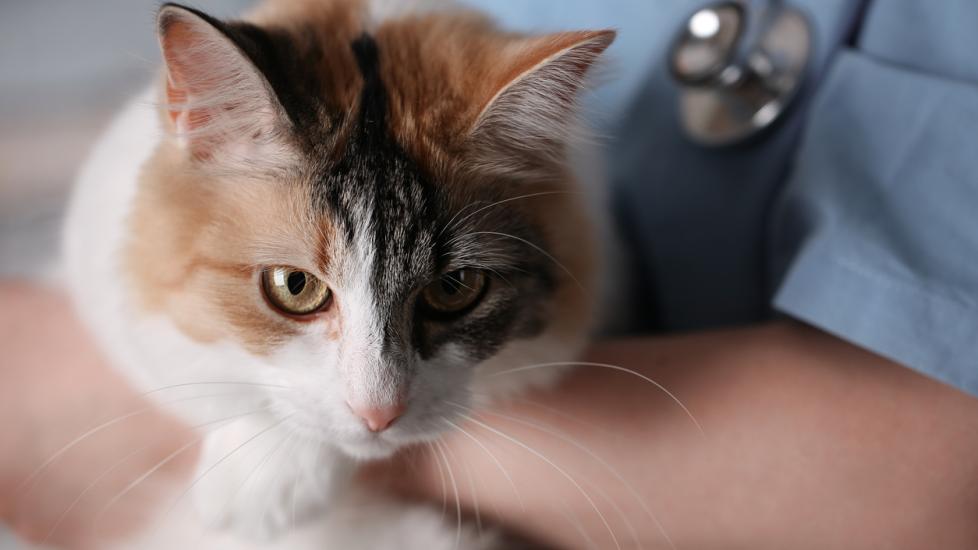Tularemia in Cats
What is Tularemia in Cats?
Tularemia is a rare but potentially fatal bacterial infection caused by Francisella tularensis. Nicknamed “rabbit fever,” this disease affects primarily rabbits and other wild rodents but in rare cases can also infect cats and even humans. Dogs appear to be mostly immune but can serve as asymptomatic accidental hosts.
Geographically, tularemia has been reported all over the world including the United States (all states except Hawaii) with higher prevalence in Oklahoma, Missouri, Kansas, and Arkansas. It is most common in later spring and summer.
Symptoms of Tularemia in Cats
Clinical signs of tularemia in cats can vary from mild to serious, with some cats showing no signs of infection and others becoming dangerously ill. Some common signs and symptoms include:
-
High fever (104-106F)
-
Depression and lethargy
-
Large painful lymph nodes
-
Abdominal pain due to an enlarged liver or spleen
-
Yellowing of the skin, mucous membranes, and whites of eyes (jaundice)
-
Anorexia and vomiting
-
Dehydration and general weakness
-
Oral ulcers and abscess
-
Sepsis
Causes of Tularemia in Cats
Ticks are the most common way the bacterium Francisella tularensis is transmitted between rabbits and rodents. However, tularemia can also be transmitted by horseflies, mosquitoes, sucking lice, fleas, or biting flies. Tissues and bodily fluids of infected animals will contain the bacteria and can spread the infection. For cats, this may mean they are infected by killing and eating rodents carrying tularemia.
The environment is another possible source of infection, as bacteria can live in the soil for weeks to months and contaminate vegetation or water. The bacteria can also travel through the air (aerosolized) and enter the body through the lungs, cuts in skin, or mucous membranes.
Tularemia is considered zoonotic which means people can become infected by animals. This may be in the form of vectors (ticks, mosquitoes) from an infected cat to a human or infected tissues or bodily fluids (handling an infected rabbit or cat). The incubation period in humans is typically 3 to 5 days but can range from 1 to 14 days.
Tularemia is highly infectious, contagious, and can be deadly in humans. If you think you have been exposed to tularemia, please seek medical attention immediately.
How Veterinarians Diagnose Tularemia in Cats
Your veterinarian will start with a thorough physical examination to assess for fever, enlarged lymph nodes, and abdominal pain. Providing a detailed history of travel, tick exposure, and hunting habits can be useful when evaluating for tularemia.
A complete blood count, serum blood chemistry, and urinalysis will likely be recommended for a baseline evaluation. Tularemia is extremely rare in cats, so your vet will be focused on ruling out more common clinical conditions such as liver disease or infection.
If your vet is highly suspicious of tularemia, he or she may recommend specialized laboratory testing. One option is to test for an immune response (antibodies) to the bacteria Francisella tularensis. Polymerase Chain Reaction (PCR) testing for the presence of the bacteria or specialized cultures for Francisella tularensis in blood or tissue samples may also be needed to confirm the diagnosis.
In wild animals (rabbits/rodents), tularemia is most often identified postmortem through necropsy (an autopsy for animals). The bacteria often creates large tumor-like masses and abscesses in the animal’s liver which can be a clue to test further for Francisella tularensis.
Treatment of Tularemia in Cats
Early, aggressive treatment is essential to successfully manage tularemia. Cats will likely need to be hospitalized for IV fluids to correct dehydration, and any electrolyte abnormalities, as well as initiating supportive care such as anti-nausea or pain medications. Antibiotics is the treatment option to kill bacteria that causes tularemia.
Recovery and Management of Tularemia in Cats
Tularemia can be deadly in cats, so early diagnosis and treatment are important to achieve quality outcomes. Most cats remain hospitalized for 2 to 3 days on IV fluids, supportive care, and antibiotics. They can typically be discharged once the fever breaks and they can consistently eat and drink on their own.
Antibiotics will likely be continued for a total of 3 to 4 weeks to ensure the bacteria Francisella tularensis is completely cleared from the cat’s system. Most cats, who respond favorably to initial treatment, will make a complete recovery.
Since vector transmission from fleas and ticks is a common source of infection, monthly flea and tick prevention is highly recommended. If you live in an area of high prevalence of tularemia, it may be wise to keep your cat indoors to minimize exposure and risk.
Tularemia is a reportable disease, meaning doctors and veterinarians are required to report its diagnosis to a public health authority for contract tracing and tracking infection.
Tularemia in Cats FAQs
Can tularemia be cured?
With early, aggressive care, tularemia can be successfully treated and effectively cured.
Can tularemia go away on its own?
Tularemia can be fatal if left untreated. Early, aggressive treatment with IV fluids and antibiotics is highly recommended if tularemia is suspected.
How common is tularemia in cats?
Tularemia mainly affects rabbits and rodent wildlife. It is considered a rare disease in cats.
Featured Image: iStock.com/SIBAS_minich
